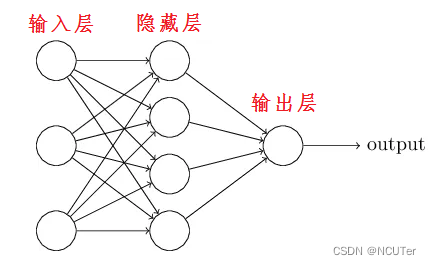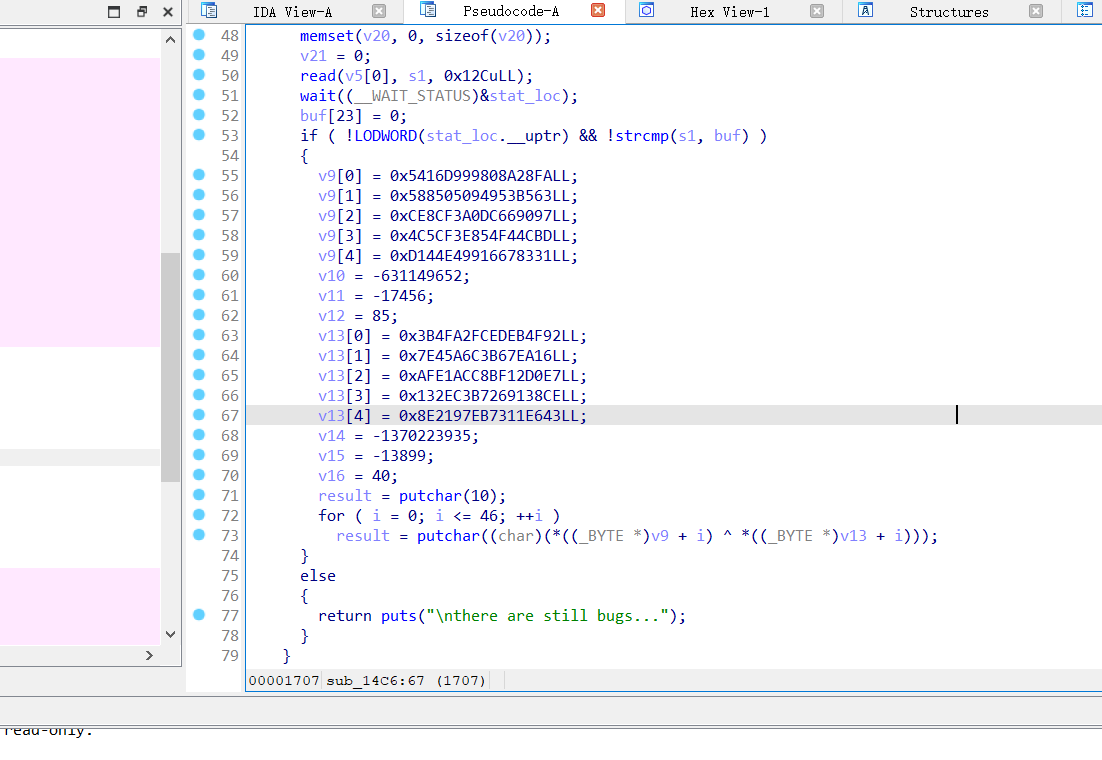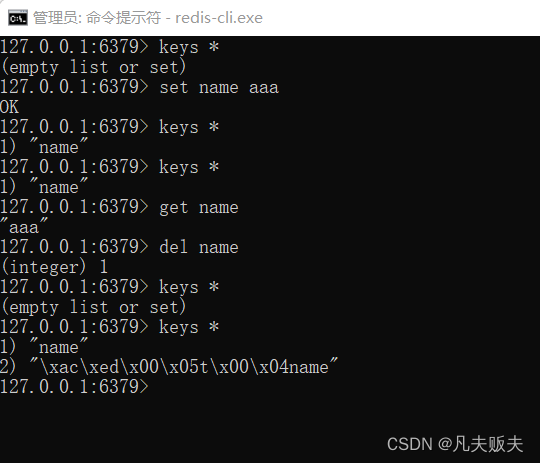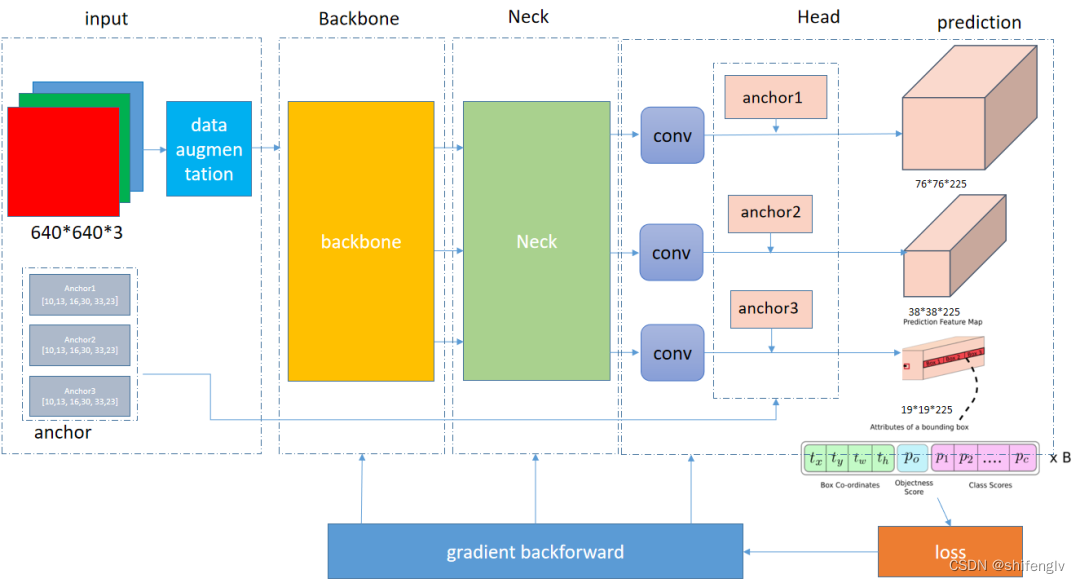目录
一、合并两个有序链表
二、两数相加
一、合并两个有序链表
将两个升序链表合并为一个新的 升序 链表并返回。新链表是通过拼接给定的两个链表的所有节点组成的。
示例 1:
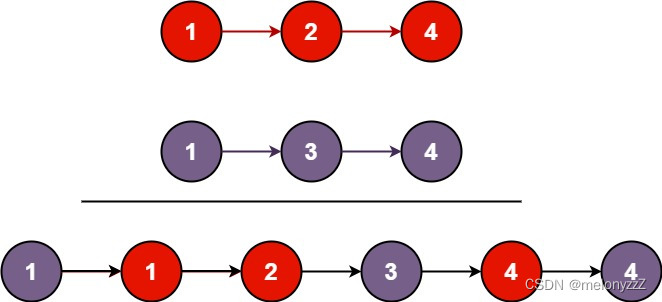
输入:l1 = [1,2,4], l2 = [1,3,4]
输出:[1,1,2,3,4,4]
示例 2:
输入:l1 = [], l2 = []
输出:[]
示例 3:
输入:l1 = [], l2 = [0]
输出:[0]
提示:
-
两个链表的节点数目范围是
[0, 50] -
-100 <= Node.val <= 100 -
l1和l2均按 非递减顺序 排列
代码实现一(不设置哨兵位的头结点):
struct ListNode* mergeTwoLists(struct ListNode* list1, struct ListNode* list2)
{
if (list1 == NULL)
return list2;
else if (list2 == NULL)
return list1;
struct ListNode* newhead = NULL;
struct ListNode* tail = NULL;
struct ListNode* cur1 = list1;
struct ListNode* cur2 = list2;
while (cur1 && cur2)
{
if (cur1->val < cur2->val)
{
if (newhead == NULL)
{
newhead = tail = cur1;
}
else
{
tail->next = cur1;
tail = cur1;
}
cur1 = cur1->next;
}
else
{
if (newhead == NULL)
{
newhead = tail = cur2;
}
else
{
tail->next = cur2;
tail = cur2;
}
cur2 = cur2->next;
}
}
if (cur1)
{
tail->next = cur1;
}
if (cur2)
{
tail->next = cur2;
}
return newhead;
}代码实现二(设置哨兵位的头结点):
struct ListNode* mergeTwoLists(struct ListNode* list1, struct ListNode* list2)
{
struct ListNode* guard = (struct ListNode*)malloc(sizeof(struct ListNode));
guard->next = NULL;
struct ListNode* tail = guard;
struct ListNode* cur1 = list1;
struct ListNode* cur2 = list2;
while (cur1 && cur2)
{
if (cur1->val < cur2->val)
{
tail->next = cur1;
tail = cur1;
cur1 = cur1->next;
}
else
{
tail->next = cur2;
tail = cur2;
cur2 = cur2->next;
}
}
if (cur1)
{
tail->next = cur1;
}
if (cur2)
{
tail->next = cur2;
}
struct ListNode* head = guard->next;
free(guard);
return head;
}二、两数相加
给你两个 非空 的链表,表示两个非负的整数。它们每位数字都是按照 逆序 的方式存储的,并且每个节点只能存储 一位 数字。
请你将两个数相加,并以相同形式返回一个表示和的链表。
你可以假设除了数字 0 之外,这两个数都不会以 0 开头。
示例 1:
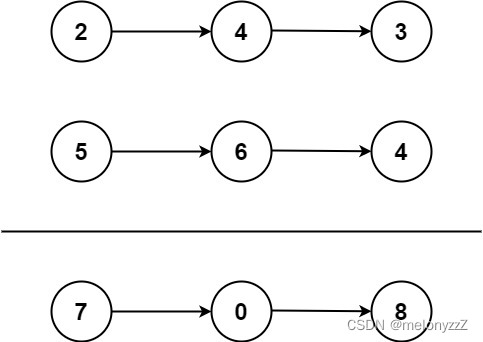
输入:l1 = [2,4,3], l2 = [5,6,4]
输出:[7,0,8]
解释:342 + 465 = 807.
示例 2:
输入:l1 = [0], l2 = [0]
输出:[0]
示例 3:
输入:l1 = [9,9,9,9,9,9,9], l2 = [9,9,9,9]
输出:[8,9,9,9,0,0,0,1]
提示:
-
每个链表中的节点数在范围
[1, 100]内 -
0 <= Node.val <= 9 -
题目数据保证列表表示的数字不含前导零
代码实现:
struct ListNode* addTwoNumbers(struct ListNode* l1, struct ListNode* l2)
{
struct ListNode* guard = (struct ListNode*)malloc(sizeof(struct ListNode));
guard->next = NULL;
struct ListNode* tail = guard;
// 两数相加
int sum = 0;
while (l1 || l2 || sum)
{
if (l1 != NULL)
{
sum += l1->val;
l1 = l1->next;
}
if (l2 != NULL)
{
sum += l2->val;
l2 = l2->next;
}
// 生成一个新结点
struct ListNode* newnode = (struct ListNode*)malloc(sizeof(struct ListNode));
newnode->val = sum % 10; // newnode->val 设置为 sum 的个位
newnode->next = NULL;
// 尾插
tail->next = newnode;
tail = newnode; // 或者写成 tail = tail->next;
// 更新 sum
sum /= 10; // sum 更新为原来 sum 的十位
}
struct ListNode* head = guard->next;
free(guard);
return head;
}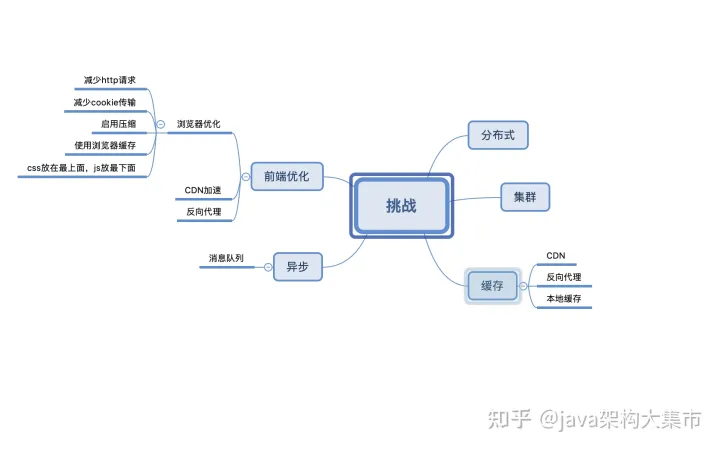





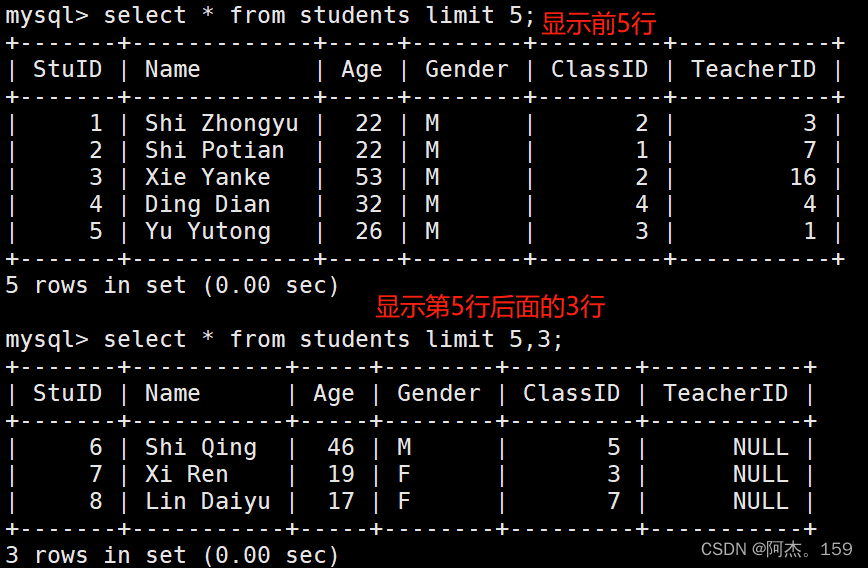



![[算法]希尔排序——插入排序的升级](https://img-blog.csdnimg.cn/f3696b9c7f6f486985fcf81f0b51ce7c.png)
